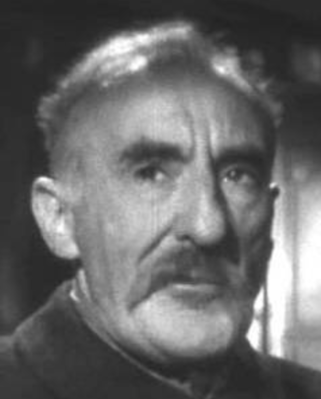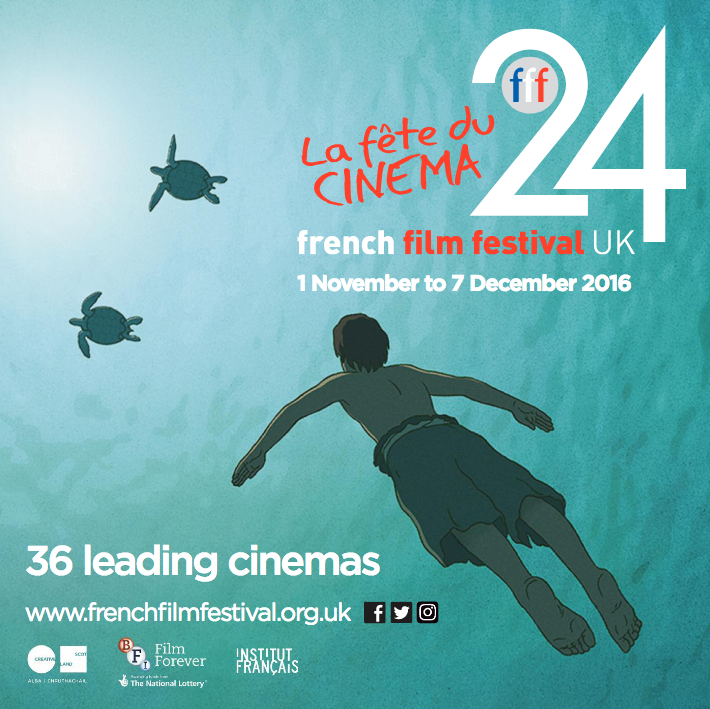Synopsis
A massive six-hour biopic of Napoleon, tracing his career from his schooldays (where a snowball fight is staged like a military campaign), his flight from Corsica, through the French Revolution (where a real storm is intercut with a political storm) and the Terror, culminating in his triumphant invasion of Italy in 1797 (the film stops there because it was intended to be part one of six, but director Abel Gance never raised the money to make the other five). The film's legendary reputation is due to the astonishing range of techniques that Gance uses to tell his story, culminating in the final twenty-minute triptych sequence, which alternates widescreen panoramas with complex multiple- image montages projected simultaneously on three screens.
Source : IMDb
Credits
Director (1)
Actors (60)
Production and distribution (1)
- Executive Producers : Pathé Consortium Cinéma, Société Générale de Films
Full credits (10)
- Screenwriter : Abel Gance
- Directors of Photography : Léonce-Henri Burel, Jules Kruger, Joseph-Louis Mundwiller, Nicolas Toporkoff, Georges Lucas
- Music Composer : Arthur Honegger
- Assistant directors : Anatole Litvak, Jean Mitry, Alexandre Volkoff, Jean Arroy, Henri Krauss, Mario Nalpas, Pierre Danis, Henri Andréani, Viktor Tourjansky
- Editor : Abel Gance
- Assistant editor : Marguerite Beaugé
- Production Assistants : Edmond T. Gréville, Constantin Geftman, Georges Lampin
- Production Designer : Pierre Schild
- Art Director : Serge Pimenoff
- Visual effects : Segundo De Chomón
Watch this movie
Watch Napoleon in VOD
| Platforms | Model | Price | Quality |
|---|
Sorry, your search returned no results.
| Platforms | Model | Price | Quality |
|---|
Sorry, your search returned no results.
| Platforms | Model | Price | Quality |
|---|
Sorry, your search returned no results.
| Platforms | Model | Price | Quality |
|---|
Sorry, your search returned no results.
Technical details
- Type : Feature film
- Genres : Fiction
- Sub-genre : War, Historical
- Production language : French
- Production country : France
- Original French-language productions : Unspecified
- Nationality : 100% French (France)
- Production year : 1927
- French release : 07/04/1927
- Runtime : 3 h 20 min
- Current status : Released
- Approval : Unknown
- Production formats : 35mm
- Color type : Black & White
- Aspect ratio : 1.37
TV broadcasting
This content is for registered users only.
Are you a member? Please login to view content.
News & awards
Selections (1)
About
Napoléon is a 1927 epic silent French film directed by Abel Gance that tells the story of Napoleon's early years. On screen, the title is Napoléon vu par Abel Gance, meaning "Napoleon as seen by Abel Gance". The film is recognised as a masterwork of fluid camera motion, produced in a time when most camera shots were static. Many innovative techniques were used to make the film, including fast cutting, extensive close-ups, a wide variety of hand-held camera shots, location shooting, point of view shots, multiple-camera setups, multiple exposure, superimposition, underwater camera, kaleidoscopic images, film tinting, split screen and mosaic shots, multi-screen projection, and other visual effects. A revival of Napoléon in the mid-1950s influenced the filmmakers of the French New Wave.
The film begins in Brienne-le-Château with youthful Napoleon attending military school where he manages a snowball fight like a military campaign, yet he suffers the insults of other boys. It continues a decade later with scenes of the French Revolution and Napoleon's presence at the periphery as a young army lieutenant. He returns to visit his family home in Corsica but politics shift against him and put him in mortal danger. He flees, taking his family to France. Serving as an officer of artillery in the Siege of Toulon, Napoleon's genius for leadership is rewarded with a promotion to brigadier general. Jealous revolutionaries imprison Napoleon but then the political tide turns against the Revolution's own leaders. Napoleon leaves prison, forming plans to invade Italy. He falls in love with the beautiful Joséphine de Beauharnais. The emergency government charges him with the task of protecting the National Assembly. Succeeding in this he is promoted to Commander-in-Chief of the Army of the Interior, and he marries Joséphine. He takes control of the army which protects the French–Italian border, and propels it to victory in an invasion of Italy.
Gance planned for Napoléon to be the first of six movies about Napoleon's career, a chronology of great triumph and defeat ending in Napoleon's death in exile on the island of Saint Helena. After the difficulties encountered in making the first film, Gance realised that the costs involved would make the full project impossible.
The film was first released in a gala at the Palais Garnier (then the home of the Paris Opera) on 7 April 1927. Napoléon had been screened in only eight European cities when Metro-Goldwyn-Mayer bought the rights to it, but after screening it in London, it was cut drastically in length, and only the central panel of the three-screen Polyvision sequences were retained before it was put on limited release in the US. There, the silent masterpiece was indifferently received at a time when talkies were just starting to appear. The film was restored in 1981 after twenty years' work by silent film historian Kevin Brownlow.
Triptych sequence
Polyvision is the name that French film critic Émile Vuillermoz gave to a specialised widescreen film format devised exclusively for the filming and projection of Gance's Napoléon. It involves the simultaneous projection of three reels of silent film arrayed in a horizontal row, making for a total aspect ratio of 4:1 (1.33×3:1). Director Abel Gance was worried that the film's finale would not have the proper impact by being confined to a small screen. Gance thought of expanding the frame by using three cameras next to each other. This is probably the most famous of the film's several innovative techniques. Though American filmmakers began experimenting with 70 mm widescreen in 1929, widescreen did not take off until CinemaScope was invented in 1953.
Polyvision was only used for the final reel of Napoleon, to create a climactic finale. Filming the whole story in Polyvision was impractical as Gance wished for a number of innovative shots, each requiring greater flexibility than was allowed by three interlocked cameras. When the film was greatly trimmed by the distributors early on during exhibition, the new version only retained the center strip in order to allow projection in standard single-projector cinemas. Gance was unable to eliminate the problem of the two seams dividing the three panels of film as shown on screen, so he avoided the problem by putting three completely different shots together in some of the Polyvision scenes. When Gance viewed Cinerama for the first time in 1955, he noticed that the widescreen image was still not seamless, that the problem was not entirely fixed.
Restorations
The film historian Kevin Brownlow conducted the reconstruction of the film in the years leading up to 1980, including the Polyvision scenes. As a boy, Brownlow had purchased two 9.5 mm reels of the film from a street market. He was captivated by the cinematic boldness of short clips, and his research led to a lifelong fascination with the film and a quest to reconstruct it. On 31 August 1979, Napoléon was shown to a crowd of hundreds at the Telluride Film Festival, in Telluride, Colorado. The film was presented in full Polyvision at the specially constructed Abel Gance Open Air Cinema, which is still in use today. Gance was in the audience until the chilly air drove him indoors after which he watched from the window of his room at the New Sheridan Hotel. Kevin Brownlow was also in attendance and presented Gance with his Silver Medallion.
Brownlow's 1980 reconstruction was re-edited and released in the United States by American Zoetrope (through Universal Pictures) with a score by Carmine Coppola performed live at the screenings. The restoration premiered in the United States at Radio City Music Hall in New York City on 23–25 January 1981; each performance showed to a standing room only house. Gance could not attend because of poor health. At the end of the 24 January screening, a telephone was brought onstage and the audience was told that Gance was listening on the other end and wished to know what they had thought of his film. The audience erupted in an ovation of applause and cheers that lasted several minutes. The acclaim surrounding the film's revival brought Gance much-belated recognition as a master director before his death only 11 months later, in November 1981.
Another restoration was made by Brownlow in 1983. When it was screened at the Barbican Centre in London, French actress Annabella, who plays the fictional character Violine in the film (personifying France in her plight, beset by enemies from within and without), was in attendance. She was introduced to the audience prior to screenings and during one of the intervals sat alongside Kevin Brownlow, signing copies of the latter's book about the history and restoration of the film.
Brownlow re-edited the film again in 2000, including previously missing footage rediscovered by the Cinémathèque Française in Paris. Altogether, 35 minutes of reclaimed film had been added, making the total film length of the 2000 restoration five and a half hours. Also, the tinting and toning made by Pathé for the original film using the Keller-Dorian colour process, were recreated and used.
The film is properly screened in full restoration very rarely due to the expense of the orchestra and the difficult requirement of three synchronised projectors and three screens for the Polyvision section. The last such screening was at the Royal Festival Hall in London in December 2004, and included a live orchestral score of classical music extracts arranged and conducted by Carl Davis. The screening itself was the subject of hotly contested legal threats from Francis Ford Coppola via Universal Studios to the British Film Institute over whether or not the latter had the right to screen the film without the Coppola score. An understanding was reached and the film was screened for both days. Coppola's single-screen version of the film was last projected for the public at the Los Angeles County Museum of Art in two showings in celebration of Bastille Day on 13–14 July 2007, using a 70 mm print struck by Universal Studios in the early 1980s.
At the San Francisco Silent Film Festival in July 2011, Brownlow announced that there would be four screenings of his 2000 version, shown at the original 20 frames per second, with the final triptych and a live orchestra, to be held at the Paramount Theatre in Oakland, California from 24 March to 1 April 2012. These, the first US screenings of his 5.5-hour-long restoration were described as requiring three intermissions, one of which was a dinner break. Score arranger Carl Davis lead the 46-piece Oakland East Bay Symphony for the performances.
Reception
Napoleon is widely considered to be one of the greatest and most innovative films of the silent era. Review aggregator Rotten Tomatoes reports that 92% of critics have given the film a positive review, based upon 12 reviews, with an average score of 8.7/10, making the film a "Certified Fresh" on the website's rating system. The 2012 screening has been acclaimed, with Mick Lasalle of the San Francisco Chronicle calling the film, "A rich feast of images and emotions." He also praised the triptych finale, calling it, "An overwhelming and surprisingly emotional experience."
Source : Wikipedia



































































